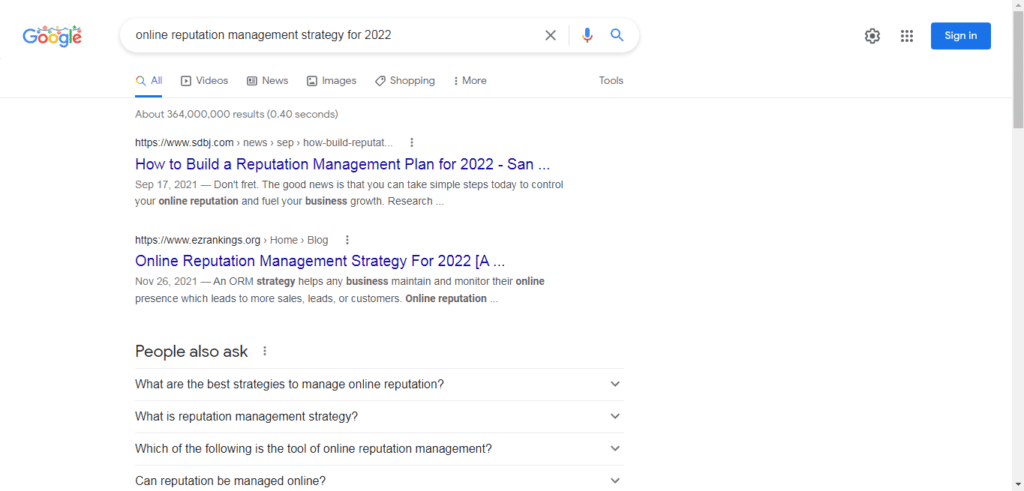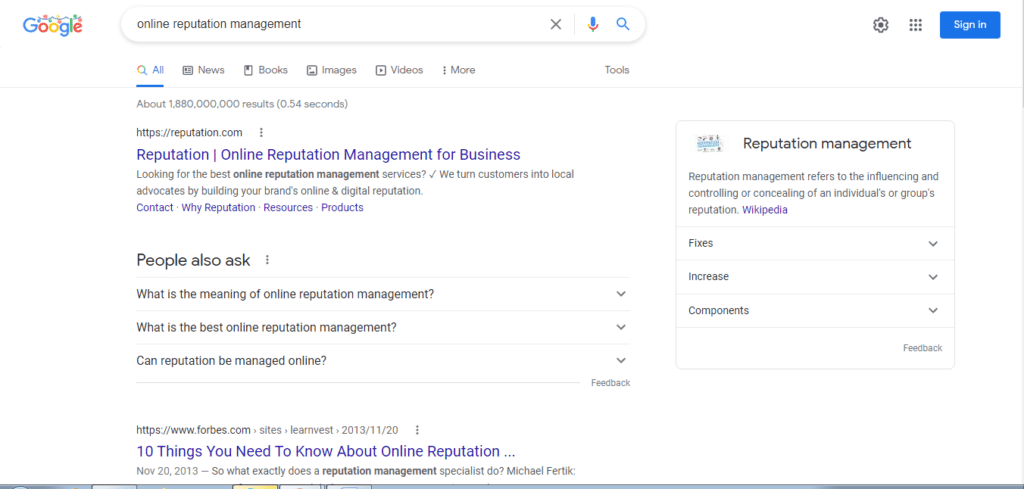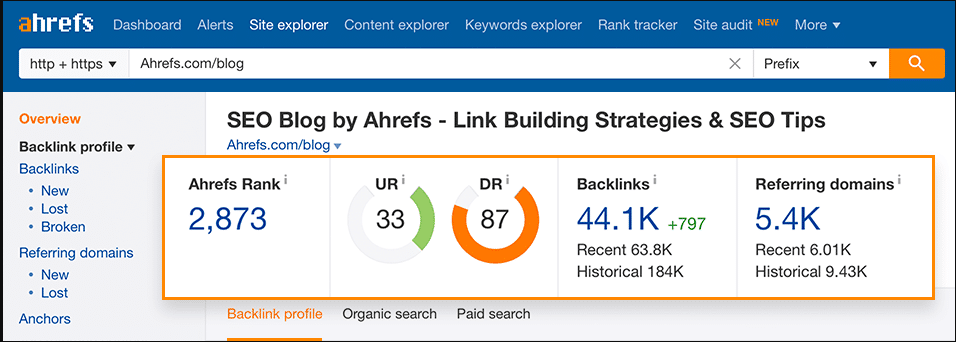
Competitor Analysis – How To Do An SEO Competitive Analysis?
16 December, 2021
Digital marketing is booming, especially with more individuals and businesses using the web. Internet usage has increased exponentially in recent years. With this, many brands or companies are now using this digital activity to their advantage. Companies are actively utilizing these mediums to promote their products or services. This new form of marketing, known as Digital marketing, involves many tactics one of which is competitor analysis.
With this much internet usage, it’s important to keep track of what your competitors are doing in this digital sphere. For reference, look at the graph below that shows internet usage.

The emphasis on usage justifies the competition that your business is entering in. Think about it, you’re not the only brand out there marketing your products or services. You’ll face competition as everyone is trying to acquire this ‘heavy internet usage’ market. Therefore, it only makes sense to study what your competitors are up to. This way you can optimize better than them and acquire your target customers.
In this blog, you’ll understand the what’s and why’s of competitor analysis. You’ll also acquire functional knowledge on how to perform this analysis and the benefits that come with it. In short, after reading this blog, you’ll have better knowledge on how to better optimize your digital marketing strategy.
What Is Competitor Analysis And What Are The Benefits Involved?
To understand a competitive analysis, you must first understand what it’s a component of. Competitive Analysis is part of SEO. SEO stands for Search Engine Optimization and is a useful domain of digital marketing. What makes SEO unique is that it’s unpaid, and requires organic efforts. Therefore, behind SEO there’s no money or budget. It’s all effort-based internet marketing.
In that regard, SEO can help you get traffic and more visits to your website. This increases your rankings in search engines like Google. Your business starts appearing more frequently in the SERP(Search Engine Result Page) when people search for a query associated with your business. SEO involves many tactics like content writing, link building, press release, keyword analysis, and more. Therefore, SEO helps your business build authority on the SERPS and represent your business as an industry leader. One important tactic of SEO is competition analysis.
Competitor analysis is all about analyzing your competitor’s digital marketing strategy. What are they implementing, how it’s getting implemented, it’s all about understanding your competitor’s efforts. This way you take those successful implementations and induct them into your marketing plan. It’s about understanding what’s working for others and realizing if it can work for you. This involves studying a competitor’s content, links built, and more.
Like a game of chess, you try to understand your competitors and try to outdo them. Take this visual below for example.

Therefore, Competition Analysis is reverse-engineering. It’s taking from your competitors and understanding and optimizing your strategy from it. There are a ton of benefits that come with it, some of which are:
- Competitive analysis can help you pin down who your actual SEO competitors are. See which of your competitor is doing well on the SERP. There’s your threat. You have just identified your competitor. Study their digital marketing tactics and learn as much as you can from them. Just don’t give them a backlink. (or any credit for that matter)
- Competitor analysis assists you in recognizing the keywords that you can target or topics that you can cover. Keywords are specific search terms that you enter in the search bar of any search engine. It is according to these keywords every business optimizes as every business wants to attract only their target customers. Study your competitor’s content strategy and recognize what you can write content about so that it shows in SERP when people type a keyword or query. What is it they’re talking about that you’re not? Target the keywords or search queries they are ranking on. Build content revolving around it.
- Helps you in figuring out where your contenders are getting links or backlinks from. Backlinks are links given to your business website from other websites. Site X can give a backlink to site Y, boosting site Y’s authority. High-quality backlinks from authoritative websites can give bring quality traffic to your website. Therefore, if your competitors are getting inbound links or backlinks from a specific website, you can approach that website to get backlinks from. Studying your competitor’s link strategy can help you acquire backlinks from the same source as they do. Getting a backlink for your website can help you acquire more traffic leading to an increase in rankings.
Now, that you understand the benefits of competitor analysis, you should learn the way to master this craft.
How To Perform An Effective Competition Analysis?
Performing competitive analysis requires a close look at everything. A competition analysis varies business-to-business and about what you wish to achieve from it. Given below are some specific factors you should consider while performing competition analysis. You can take an idea by following these methods which will certainly help you in performing competitor analysis.
1. Always Check Your Competition For Long-Tail Keywords
Sometimes, you might think you’ve dominated your competitor on the SERP if they aren’t ranking for short-tail keywords. Short-tail keywords are search phrases that are no more than 3 words, like online reputation management or social media marketing. However, you could be missing out on something valuable. Sometimes, your contenders could be wiping out the rankings on specializations or long-tail keywords. Long-tail keywords are long search phrases with more specific search intent.
The search engine result page could be different for ‘online reputation management strategy for 2022’. Now, that’s a long-tail keyword. However, it could be entirely different for ‘online reputation management ‘, a short-tail keyword. That’s a specific term or a short-tail keyword. Hence, competitor analysis is incomplete without studying the long-tail keywords of your competitors. Look at the images below:


You see the rankings change entirely. Your competition changes. A general suggestion here is to also monitor and follow businesses that are ranking on long-tail searches. You could be getting dominated by lesser-known contenders. Sometimes, certain businesses rank well for a string of long-tail keywords. They might be acquiring a specific value in a market. Therefore, they might not rank for short-tail keywords but might be driving traffic from long-tail keywords. Make this a crucial lesson of your competitor analysis strategy.
That’s a huge loss on valuable traffic and conversions if you’re not focusing on long-tail competitors. Some competitors could be dominating a specific segment of a market. The takeaway from this is to focus not on the overall market or specific terms but even focus on particular segments of the market. Therefore, optimizing for broad searches can bring valuable traffic and customers to your business that you couldn’t have attracted if you haven’t optimized for it. Focusing on long-tail keywords is, therefore, important.
Lastly, be sure who not to compete with. If for a specific keyword, sites like Wikipedia are ranking above you, it might not be worth your time to outrank them. Some sites are naturally the authority. Learn this differentiation and instead, focus on other keywords for which they are not ranking. Do something different from your competitors or if you feel you can overtake a competitor on a long-tail keyword, do it. That’s one solid way to invite more traffic. In conclusion, be aware of your limitations and then compete smartly.
2. Do A Page Study
It’s required to do an extensive observation of your competitor’s keywords. However, what’s also important is to recognize the popular pages of your competitors. Look at their pages and identify which pages rank for multiple keywords, or which pages get more traffic.
In certain situations, a competitor’s specific page can show on multiple keywords. A single page can help a business garner lot of traffic or sales. Make it a part of your competitor analysis strategy to study which pages are getting the most traffic. You can analyze those pages and understand what’s cooking? Learn from your competitor’s successful pages and implement or change anything, if you feel, it can get you more traffic.
3. Study Their Content
Content is vital for any business. As stated by Bill Gates in 1996, “Content is king”. This statement stands even true today. Every business platform is utilizing content for its digital marketing. So, make sure to study your competitor’s content as part of effective competitor analysis.
- Learn what topics in your domain are they writing about?
- What’s the page format?
- Is the content in-depth or less thorough?
- Do they have supportive pages or are they only focusing on product or service pillar pages?
To get an answer to these questions, studying your competitor’s content can provide valuable information. So, make sure to study content as it can unlock multiple digital marketing mysteries about your competitors.
Content doesn’t necessarily mean written content. It is a broad term that encompasses all forms of content. Content can be anything from video to infographics to engaging social media content. Content is anything of value and entertainment, regardless of how it’s presented.
Therefore, you should study your competitor’s content marketing strategy. Look what they’re doing differently? Is their content more educative, more interesting, what’s driving their sales? Learn and implement.
4. Understand Their Authority
You might face challenges to outdo a competitor who has a higher website or domain authority than you. Google assigns every website domain authority. It is their standing or power on the web. If some website has a higher DA(Domain Authority) than you, you might have a harder time beating them on the SERPs.
If they are a well-known company with high-value content and backlinks, it’s better to target those keywords that they’re not targeting. Look or pick those keywords or search queries that they’re not targeting. Set yourself apart from them, in that case. Competitor analysis is also about understanding your restrictions but using them to your advantage if utilized smartly.
5. Technical And Mobile Optimization
Make sure to keep a tab on your page speed, and other technical issues. As sites get bigger, they tend to get slowed down. Fixing technical issues in that regard can help you overcome this issue. Have a look at your competitor’s code and learn from it. Fixing for any issues on your website can significantly benefit you.
Make sure to visit your competitor’s website on a phone and tablet, and compare their website performance to yours. There are shortcomings you might notice on your competitor’s website and that can help you optimize your website for mobile performance.
Make sure to build a technically strong website. Having a good technical website increases page speed, performance, and leads to a better user experience. With a better user experience, individuals spend more time on your website giving you a higher chance for conversions or sales. As you should know that 53.9 percent of U.S retail E-commerce revenue comes from mobile sales, as per Studio 98. So an optimized mobile website means more sales or revenue.
Having a technically sound website is also important for search engines as it makes it easier for search engines to access your website. Building a technically faulty website can make it harder for search engines to crawl or find your website. If Google can’t crawl your site, you don’t get the ranks. It’s that simple. So, fix your technical issues as part of the competitor analysis strategy.
6. Check For Internal Linking
This is crucial. Look at how competitors have structured their website and its interlinking. Competitor analysis involves how pages are linked and connected. If your website doesn’t have a good internal linking structure, this can largely impact your SEO and rankings.
Study your competitors linking on their website. Look at their anchor text, internal linking. In short, study how the whole website is linked together and the interlinking between pages. Having a solid website structure is important for SEO and linking can help you achieve that. Learn from their mistakes and implement them on your website to better your SEO results.
7. Backlink Analysis

Competitive analysis is incomplete without analyzing your competitor’s backlinks. You need to have a better backlink profile from your competitors to outrank them. Study where they’re getting their links from. If they’re getting high-quality links, make sure to bring the same in your strategy. Look at the sources, where they’re getting high-quality backlinks from. Try to get from the same source.
However, don’t go for quantity over quality. Always go for high-quality backlinks even if your competitors are getting them from low DA websites. You can never know someone’s complete strategy so keep the basics in mind, even while doing competitor analysis.
There are two types of backlinks: one is a Do-Follow link and the other one is a No-Follow link. Do-Follow link passes authority or link juice to the website which built the link. Therefore, for building that link the link builder or the website that built the link on some other website gets the link juice from that website on which the link is built. Passing the link juice or authority helps the business and boosts its SEO rankings.
However, on the contrary, No-Follow links pass no link juice or authority. It, in any way, has no SEO significance. So, it has no benefit for SEO.
Both Do-Follow and No-Follow links can be studied for your competitor analysis. Both bring traffic, after all. No-Follow link can benefit you in other ways, if not from SEO. It can still bring the user or traffic to your website and that can benefit you in other aspects apart from SEO.
Note: Since March 1, 2020, Google has updated its policy on No-Follow links. It now considers No-Follow links as a hint for crawling and indexing purposes. This update makes it even more important to study your competitor’s No-Follow link as well.
8. On-Page Elements
Apart from the main body content, there are some other on-page elements you should necessarily focus on while doing competitor analysis. Some of these elements are:
-
Titles
Understand how your competitor’s titles are formed. Do they emphasize keywords or put the name of their website in their titles. Does it provide them with some SEO benefits? If they’re optimizing their title how they’re doing it, and where they’re ranking on the SERP overall.
Also, see how Google is changing the title for the search. What’s the natural title, and the title change when the search happens(if the title changes at all). Google changes the title when the search happens mainly by adding the website name, or by adding a specific keyword to better match it with user search intent. So, study the title of your competitors both ways. Page Title is the second-most-important On-page SEO factor after Content, as per Moz. You can see now how important page titles can be.
-
Meta Description
The meta description provides a brief description of what the page is about. You can also understand its SEO significance. Page meta description appears in Google Search results. Have a look at the picture below:
As you can see the “This blog will look into…” section right after the date. That’s a meta description. The meta description should clearly define what the page is about as you can see here. It has SEO significance as it entices the user into clicking on the link as it’s providing them valuable information on what the page is about. This helps the user as well as the search engines to know what content they can expect when they access this link.
It’s important to note how your competitors are using the keywords in their meta descriptions. Also, note the overall description that your competitors are writing. Studying this can help you understand a lot about their On-Page strategy. Therefore, meta descriptions are crucial for your competitor analysis.
-
Heading Tags
SEO gives value to <H> tags of a page. Your H tags should be properly used and should define the page content. H tags are from H1 to H6. H1 is the most important H tag. H1 is the heading of your page and should be unique and one.
From the SEO standpoint, H tags are given a lot of value. H tags can be used to provide featured snippets for a search query. Featured snippets are brief, yet precise information that appears for a search query at the top of a SERP. Therefore, make sure to see how competitors are utilizing their heading tags and see if they’re receiving any SEO benefits for it.
Why You Should Never Stop With Competitor Analysis?
With SEO or Search Engine Optimization, you never stop as it’s all effort-based. Therefore, being an SEO tactic, you never stop with competition analysis either. It is an ongoing practice that should never be stopped. Competitive analysis is a process of continuous improvement and hence, it requires dedicated endeavors.
This tactic is not one and stopped. It’s multiple and continuous. Things change with frequent search algorithm updates and with that, you must revisit and look for any changes. A change in your digital marketing strategy also requires a different look or take on your competitive analysis.
With competitive analysis, make sure to implement what you learn from your competitors before any algorithm shifts happen. When major changes happen, revisit and optimize your competition analysis, if required. It’s not you did it once, and you’re done. Algorithmic shifts will happen as it’s not in your hand. So, you have no other option but to be continuous in your SEO efforts and competitor analysis.
With the changing dynamics of the web, it’s essential to keep up with the trends, or else you’ll fall behind. To stay ahead of the curve, competition analysis can play a crucial part.
The Bottom Line
SEO is incomplete without an effective, result-oriented competitor analysis. It takes your internet marketing efforts to new heights if properly implemented. If you keep the measures discussed in this blog, in your mind, you’ll see your SEO efforts soaring to a new level in no time. The trick is to be observant and take note of what’s working and what can be implemented. Learn from your competitors and do it for your business. Understand what can be fixed and what can’t be. Competitor analysis is about knowing your limitations and then making the best out of them and not making the same mistakes as your competitors. It can get you results if done right.